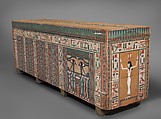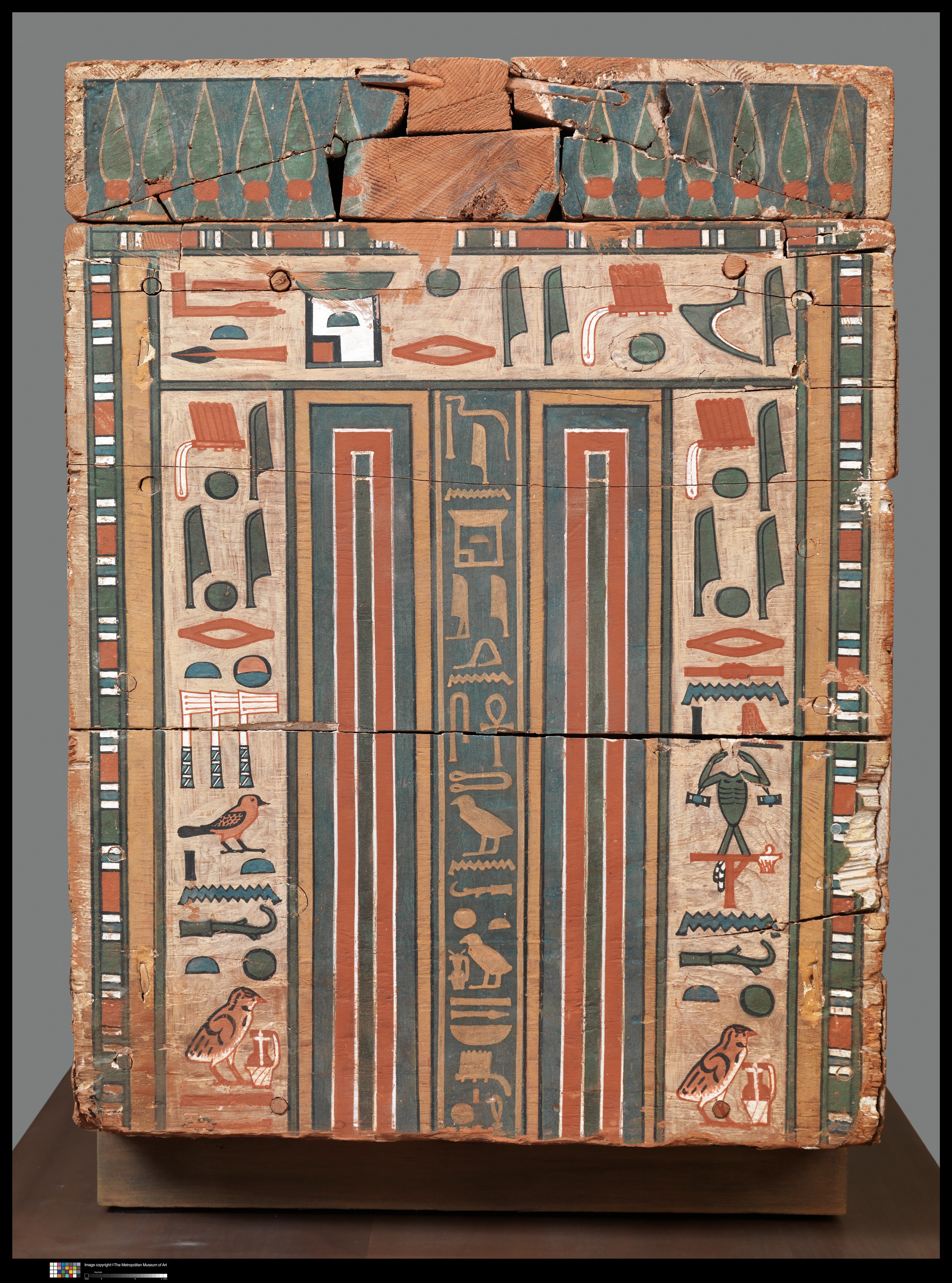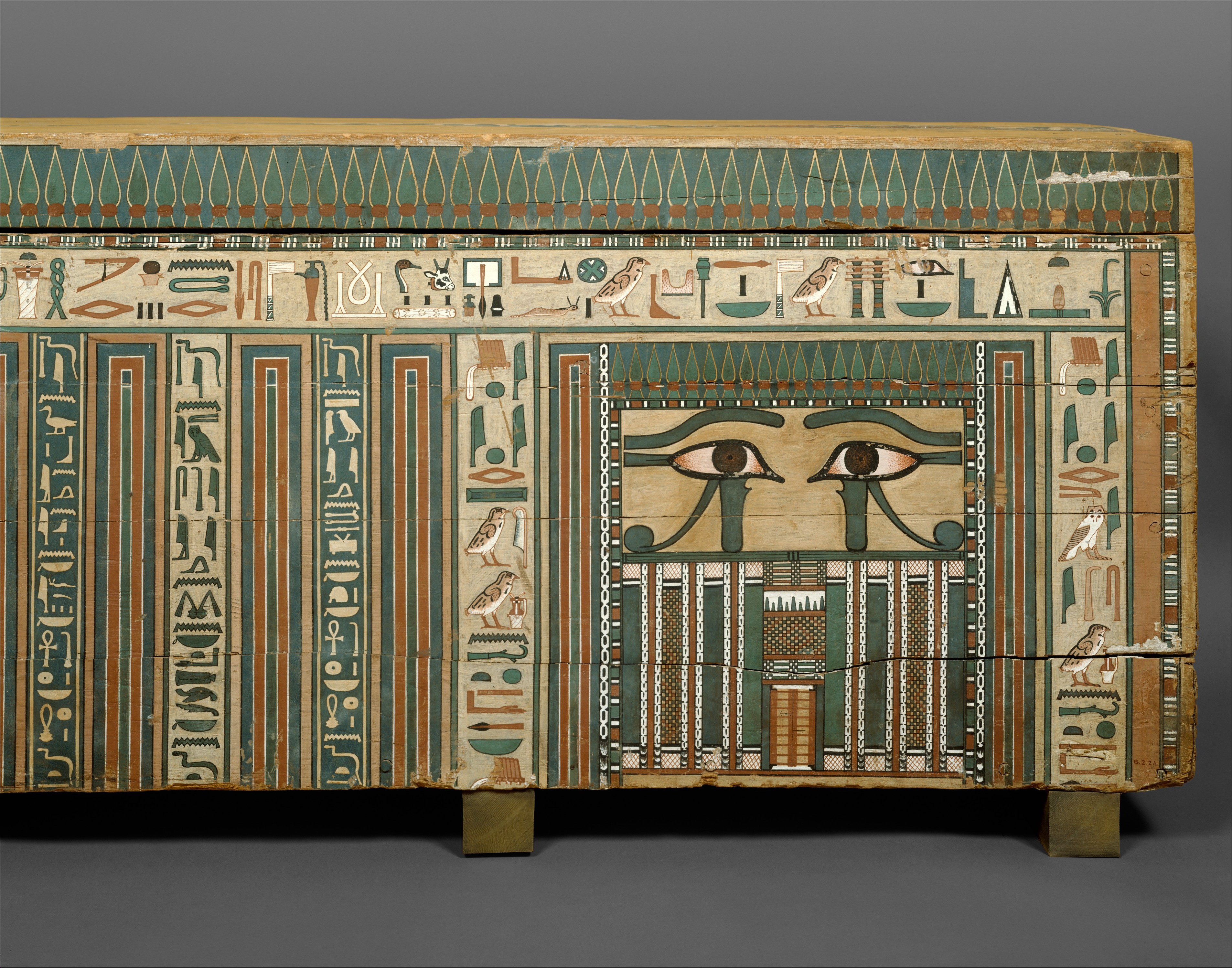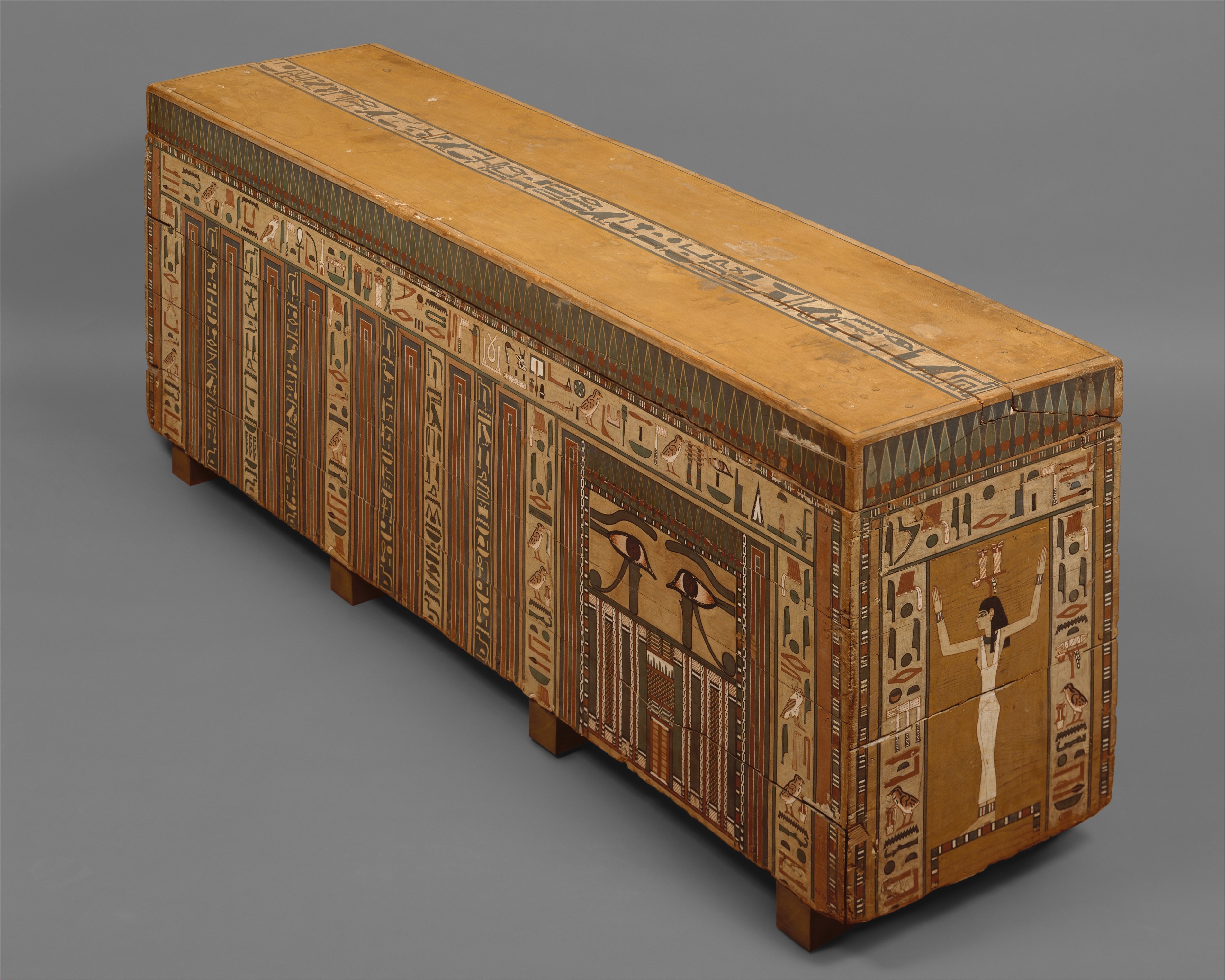Coffin of Khnumnakht
Middle Kingdom
The brilliantly painted exterior of the coffin of Khnumnakht, an individual unknown except for his name, displays the multiplicity of texts and decorative panels characteristic of coffin decoration in the late Middle Kingdom. It has at least one feature—the figure of the goddess on the head end—that is rare before the late Middle Kingdom. The figures and hieroglyphs have been drawn by the confident hand of a skilled artist and each hieroglyph has been carefully painted in the prescribed manner of the time and place in which the coffin was made.
On the left side of the coffin box there is an architectural facade with a small doorway in the center at the bottom. This is the equivalent of the Old Kingdom false door, which allowed the spirit of the deceased to move between the land of the dead and the land of the living. In this case, it is painted to resemble two wooden door leaves secured with two door bolts. Above the door are two eyes that look forth into the land of the living. The face of the mummy would have been directly behind this panel. The rest of the exterior is inscribed with invocations to, and recitations by, various primeval deities, particularly those associated with death and rebirth, such as Osiris, foremost god of the dead, and Anubis, god of embalming.
#3340. Coffin of Khnumnakht
Due to rights restrictions, this image cannot be enlarged, viewed at full screen, or downloaded.
This artwork is meant to be viewed from right to left. Scroll left to view more.








